New in Theaters
I’m locked in a race with the upcoming release of Ron Howard’s Angels & Demons this week to see if I can finish reading the book by Dan Brown before I see the film. Last time Howard tackled a Dan Brown opus with The DaVinci Code, I tried the other approach, and read the book after having seen the film. Of course, I was in the minority on that movie, since I thought it was entertaining enough for the lightweight thriller it was—an idea for which I’ve been taken to task by more than one reader—and I wanted to see if the book really was that much better than Howard’s film.
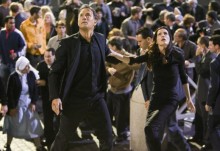
What I found was that the book was a lot shrewder in terms of structure than the film. It’s built on a literary device that would be clunky and possibly even unintentionally funny on film. Brown’s approach is to turn the whole book into a series of cliffhangers. Just as something is about to happen, the chapter ends and the reader is then thrust into a chapter about something else happening somewhere else. So you have to read through that chapter to get to the next chapter for the conclusion of the previous chapter, and by that time the chapter you’re reading through has set up its own cliffhanger, and so on. If ever there was a recipe for what publishers like to call a “page-turner,” this is it. It also makes the book seem to move—mostly because the reader is providing that illusion by wanting to know what happens next.

The film version lacked that to a large degree, but I still maintain it’s an OK representation of the book—with the more controversial elements toned down. In the case of Angels & Demons—based, I admit, on the first 100 pages only—what I’m hoping for is something that departs from the book as much as possible. The crosscutting approach is also in evidence, but it’s handled with much less precision and the story line is way on the far side of cheesy. Surely it cannot have been Brown’s intention that I should laugh at every unsurprising revelation that crops up. Claims that Howard and his screenwriters have been “less reverential” toward the material this time are the beacon of hope here. Of course, for those who have to be up on the latest thing, Angels & Demons is the inevitable new movie choice this week.
The only other new option coming to town this week is the documentary Valentino: The Last Emperor, an apparently very candid and entertaining look at fashion designer Valentino Garavani and his long-time partner Giancarlo Giametti during the last days of Valentino’s reign as lord of his own haute couture kingdom. Its arrival means the departure of both Shall We Kiss? and Tokyo!, so if you’ve any interest in catching either of those, now is the time. And when I say “now,” I mean no later than Thursday.
Noteworthy DVD releases
It’s another generally lackluster week in terms of DVD releases, with the “big” titles being Taken and Underworld: Rise of the Lycans. I missed the former altogether, so I might consider catching it at some point, though nothing I’ve heard or read makes me particularly anxious to do so. As to the latter, I can’t imagine sitting through that a second time. I suppose watching it at home would have certain advantages—like wandering in and out of the room, especially out.
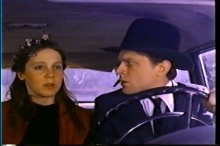
However, there is one bright spot here—the at-long-last release of John Huston’s Wise Blood (1979). If you happened to see this when it screened at last year’s Asheville Film Festival, then you know what a terrific-looking film it is. If all you’ve seen is the old VHS tape of Wise Blood, on the other hand, you haven’t a clue on that score. It’s also a pretty great movie in the bargain, showcasing Brad Dourif in what is probably his best performance as Hazel Motes, a discharged soldier who attempts to start the evangelical ministry of the Church Without Christ: “Where the blind don’t see and the lame don’t walk and what’s dead stays that way.”
Though far from perfect—Alex North’s score (at least when it isn’t mostly variations on “The Tennessee Waltz”) tries way too hard to goose the comedic elements—Wise Blood remains one of John Huston’s most accomplished works. That it can finally be seen as it should be seen is cause for at least a bit of a celebration.
Notable TV screenings
As with everything else, this week’s offerings of movies on TV is on the slight side, though there are a few bright spots—and one particularly interesting day of movies.
I Am the Law Wednesday, May 13, 9:15 a.m., TCM
I Am the Law (1938) is by no means a great movie, but it’s very much a fun one that isn’t shown very often and only made it (so far) to VHS and laser disc back in the late 1980s. Edward G. Robinson stars as a law professor who is asked to start a task force to rid his college town of racketeers. (Whether or not racketeers were a huge problem in small-town America in the 1930s, I don’t know, but the movies of the time seemed to think so.) It’s always nice to get to see Eddie G. on the right side of the law—even if the law, as is often the case in this type of movie, is more than a little on the vigilante side. It’s a movie that plays better if you know your character actors of the era. The scene where Robinson (correctly) fires one of his suspect assistants played by professional movie weasel Byron Foulger is much funnier—“I don’t like your face. I never did like it. You’ve got shifty eyes and a weak chin”—if you know that it sums up Foulger’s usual function in movies.
Remember the Night Thursday, May 14, 7 a.m., TCM
Mitchell Leisen’s Remember the Night (1940)—from a screenplay by Preston Sturges—really ought to be shown as a Christmas movie, since Christmas and New Year’s form its time frame and are essential to the plot. In fact, I’d suggest recording this one and pulling it back out in December, but it’s a welcome blend of sharp comedy and honest sentiment at any time. The premise finds district attorney Fred MacMurray getting supposed kleptomaniac Barbara Stanwyck’s trial held over till after Christmas when he sees the jury is going to acquit her. Realizing he’s doomed her to spend the holidays in the slammer, he has her bailed out—a move mistaken by the bail bondsman as evidence of carnal rather than charitable interest, causing Stanwyck to be delivered to MacMurray’s apartment.
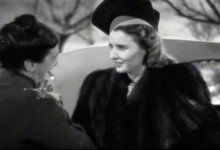
What happens from there isn’t in itself very surprising, but the direction the story takes from about the halfway point is hardly what you’d expect. Comedy and drama don’t always mix, but they do here, especially with Stanwyck—aided immeasurably by Beulah Bondi and Elizabeth Patterson—giving a performance that’ll break your heart. Yeah, it’s kind of old-fashioned and totally a Hollywood studio product (just check out that rear-projected Niagara Falls!), but it’s also funny and blessed with such honest emotion that it’s hard to resist.
Murder! Saturday, May 16, 6 a.m., TCM
Alfred Hitchcock’s second talkie, Murder! (1930), is a sometimes-creaky affair—less exciting than his first talkie Blackmail (1929)—that operates on the now-bewhiskered device of the one juror (in this case, Herbert Marshall) who believes in the innocence of a woman (Norah Baring) found guilty of murder (you probably guessed the crime from the title). Naturally, he sets out to prove that someone else has done it. Though it’s sometimes slow going, there are some nice comic scenes and quite a few clever Hitchcock touches—not to mention that a transvestite trapeze artist figures into the solution, something you don’t encounter just every day, you know.
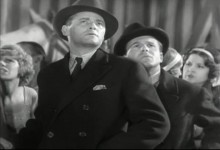
In his book Cinema in Britain Ivan Butler claims that the scene where Herbert Marshall is shaving while the “Prelude” to Tristan and Isolde plays on the radio was accomplished by having a small orchestra positioned just out of camera range to perform the piece. It sounds improbable, but they did so many very curious things when trying to figure out the medium of the sound film that it’s very likely true.
Early Frank Capra Festival Monday, May 18, 6:30 a.m.-8 p.m.
OK, this is the treat—a solid day of Frank Capra movies from the 1929-1932 era. The Caprathon goes through Flight (1929), Ladies of Leisure (1930), Rain or Shine (1930), Dirigible (1931), Platinum Blonde (1931), The Miracle Woman (1931), American Madness (1932) and Forbidden (1932). In other words, it’s all of Capra’s talkies through 1932, except for The Donovan Affair (1929), which last known was languishing in a vault awaiting restoration.
A lot of these are of more historical than artistic interest. You could start with Platinum Blonde and be fine. Regardless, it’s more than worthwhile to get a look at Capra pre-It Happened One Night (1934). One only wishes that the set also included Lady for a Day (1933), The Bitter Tea of General Yen (1933) and Broadway Bill (1934) in order to get the whole picture of Capra’s early work. Frankly, these films are a lot more cinematically creative than his later movies.
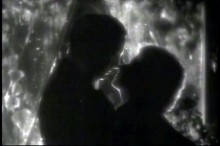
The shimmering look of Platinum Blonde is stunning and the film contains some astonishing traveling shots, not to mention an attention to composition quite unlike anything in his supposedly mature output. It also boasts a fascinating performance from the tragic Robert Williams, who might have gone on to be a major star had he not died of appendicitis just as this film was being released. You’ll also find the roots of Mr. Deeds Goes to Town (1936) in this film—and for that matter, a sequence from this film was copied almost exactly in Deeds.
The Miracle Woman is also worthwhile, with Barbara Stanwyck as the bitter daughter of a minister, who, when her father dies, transforms herself into a showy phony evangelist. Even though it settles for a soft ending, it’s a surprisingly strong indictment of radio evangelists of the era.
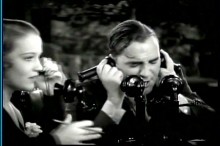
Altogether terrific is American Madness, one of the few Depression-era films to actually tackle the topic of a bank failing. The story is wrapped in a robbery melodrama with some marital infidelity thrown in, but the performances of Walter Huston, Pat O’Brien, Kay Johnson and Constance Cummings more than carry the day—as does Capra’s creative direction. His mastery of crowd scenes was never seen to better advantage, and while it heads for the inevitable Capra ending (they didn’t call it Capracorn for nothing), the run on the bank captures a true whiff of the hysteria of the time.




WISE BLOOD is long overdue, and thank god they gave it to Criterion to handle.
This is actually a pretty good week. Besides TAKEN, which I loved (the best Charles Bronson film he wasn’t in), three tv shows are out. The hippie-bashing PENN & TELLER BULLSHIT SEASON 6, and the cancelled-too-soon THE DANA CARVEY SHOW. Why should you care about that last one? This mid 90s sketch show featured Stephen Colbert, Steve Carrell, Robert Smigel and Charlie Kaufman. Lastly is the 1970s BBC classic THE FALL AND RISE OF REGINALD PERRIN… very funny stuff.
I didn’t see these but a collection of Seth MacFarlane (FAMILY GUY) online shorts are out plus the sequel (?) to DONNIE DARKO called S. DARKO. Of course, none of the major actors from the first are in it, except the sister.
It’s hard to believe that’s Michael Sheen starring in UNDERWORLD!
Next week is my favorite time of the month… Rykodisc week!
It’s hard to believe that’s Michael Sheen starring in UNDERWORLD!
In the sense of it’s hard to believe what you see on the screen is him, or it’s hard to believe he said yes? If the latter, I’d put it down the standard Brit attitude toward acting as “a job of work,” which is probably an outgrowth of the traditionally less glorious British pay rates for actors. In any case, it’s an attitude that explains some pretty dubious choices.
Next week is my favorite time of the month… Rykodisc week!
You’ve mentioned this before. Would you care to enlighten the unenlightened or do we have to wait till next week?
In the sense of it’s hard to believe what you see on the screen is him, or it’s hard to believe he said yes? If the latter, I’d put it down the standard Brit attitude toward acting as “a job of work,” which is probably an outgrowth of the traditionally less glorious British pay rates for actors. In any case, it’s an attitude that explains some pretty dubious choices.
Well, he hasn’t made the great career choices like Sir Ben Kingsley has, but I didn’t even realize that Sheen was in all three Underworlds.
You’ve mentioned this before. Would you care to enlighten the unenlightened or do we have to wait till next week?
Rykodisc is a distributor that handles some of the more interesting dvd companies: Troma, Synapse, No Shame, Mondo Macabro, Redemption and many others. So for one week each month I am treated with the mother lode of European skin films, French vampires, biker flicks, Japanese zombie flicks, and Jess Franco. Sheer hell for most, but heaven to me.
Monday night on the Discover Channel is a show that features the science/history of Angel and Demons. It should be interesting to compare it to the book/movie.
Sheer hell for most, but heaven to me.
I tell you what, Marc, I’ll let you go through this first — then you can make recommendations. But don’t try selling me on Jess Franco or Jean Rollin.
Monday night on the Discover Channel is a show that features the science/history of Angel and Demons.
Thanks for the heads-up.
I tell you what, Marc, I’ll let you go through this first—then you can make recommendations. But don’t try selling me on Jess Franco or Jean Rollin.
Oh, alright. Actually, Synapse and Mondo Macabro are my two favorite companies. They don’t deal with Rollin or Franco but have turned me on to some of the wildest films I’ve ever seen.
Monday night on the Discover Channel is a show that features the science/history of Angel and Demons.
There’s also a dvd tie-in called ANGELS AND DEMONS REVEALED. Came out a couple of years ago.
They don’t deal with Rollin or Franco
Very wise.
Thrilled to see Wise Blood out. The Church Without Christ and it’s
jealous, rival sidewalk ministry, The Church of Christ Without Christ. (Or was that bit just in the novel?) Anyway, it’s one that goes well with it’s (short) book.
Michael Sheen in Underworld calls to mind Helen Mirren in Inkheart. I’m sure she did it for the chance to ride in bareback on a white horse, hair flying.
Or was that bit just in the novel?
No, it’s in the film.
I’m sure she did it for the chance to ride in bareback on a white horse, hair flying.
As if you could have passed up such a chance? I’m still of the opinion that Ben Kingsley agreed to Bloodrayne solely because he got to play almost the entire film sitting down.
Ha! Sir Ben’s no fool. And you’re right about me and the horseback stunt. Can you tell from the book whether the Ron Howard movie is about how many different types of angels there are? (Thrones and wheels and cherubim and seraphim and pin-dancers. . .) And what about the poor gargoyles? They haven’t had a movie in their behalf since that superb 1970’s (TV) movie Gargoyles. That movie cries for a sequel.
Can you tell from the book whether the Ron Howard movie is about how many different types of angels there are? (Thrones and wheels and cherubim and seraphim and pin-dancers. . .)
Well, I haven’t finished the book, but now I can tell you from the film that, no, none of that addressed — including the question of the number of angels doing the Charleston in the head of a pin.
They haven’t had a movie in their behalf since that superb 1970’s (TV) movie Gargoyles. That movie cries for a sequel.
If I were you, I wouldn’t tell that to T’other Ken, or you’ll find yourself hanging from a rooftop in heavy makeup and trying to talk like Bernie Casey. You know I’m right.
Ha! Too right. Gargoyles must never be mentioned at home, along with monsters that look like blobs of yeast, characters that dangle in air or jump off cliffs, and anyone or thing gratuitously naked. It only takes a misplaced word and we’re off on another unholy adventure, in search of the Monster of the Loch. The Vatican would make a nice change. It’s got art in there.
The Vatican would make a nice change.
Uh, like reproducing it on a small scale in a garage would daunt him?